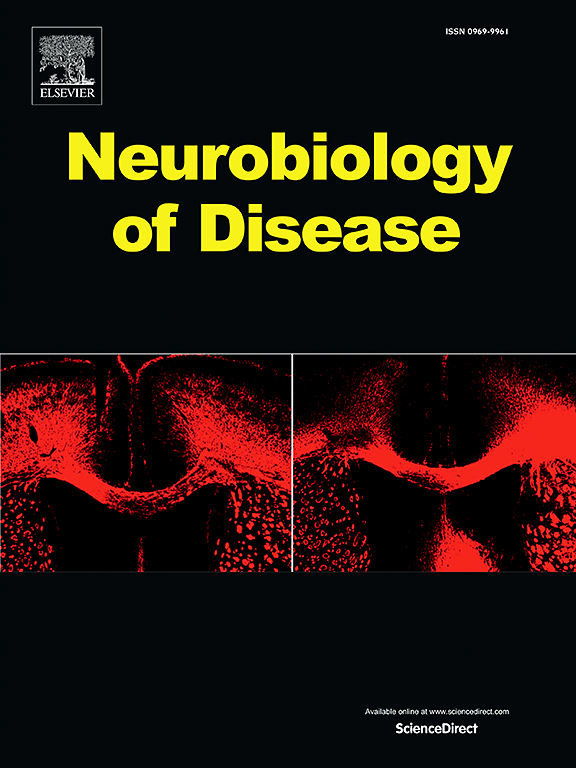Sphingomyelin-induced glucocorticoid receptor alterations lead to impaired presynaptic plasticity in acid sphingomyelinase deficient neurons
IF 5.6
2区 医学
Q1 NEUROSCIENCES
引用次数: 0
Abstract
Acid sphingomyelinase deficiency (ASMD) is a rare disease caused by mutations in the gene encoding ASM, an enzyme that degrades sphingomyelin (SM). In addition to SM accumulation, neuroinflammation and cognitive impairment are pathological hallmarks of neurovisceral ASMD. Since the glucocorticoid system may influence these features, we have characterized it in ASM knockout (ASMko) mice that mimic this form of the disease. While plasma corticosterone levels are not altered in these mice, brain levels of the α, but not the β, isoform of glucocorticoid receptors (GR) are reduced. The reduction is evident in neurons and is due to the accumulation of SM. As a consequence, the expression of the protein, synapsin I, is low in ASMko neurons, leading to the disorganization of synaptic vesicles and to impaired presynaptic plasticity. Treatment with the glucocorticoid hydrocortisone diminished SM levels, increased synapsin I expression, and improved presynaptic function in neuronal cultures and hippocampal slices of ASMko mice. These findings establish, for the first time, a link between the glucocorticoid system and brain pathology in ASMD, highlighting the GR as a potential therapeutic target for this devastating disease.
鞘磷脂诱导的糖皮质激素受体改变导致酸性鞘磷脂酶缺陷神经元突触前可塑性受损
酸性鞘磷脂酶缺乏症(ASMD)是一种罕见的疾病,由编码ASM的基因突变引起,ASM是一种降解鞘磷脂(SM)的酶。除了SM积累,神经炎症和认知障碍是神经内脏ASMD的病理标志。由于糖皮质激素系统可能影响这些特征,我们在模拟这种疾病形式的ASM敲除(ASMko)小鼠中对其进行了表征。虽然这些小鼠的血浆皮质酮水平没有改变,但糖皮质激素受体(GR) α异构体的大脑水平降低,而β异构体没有改变。这种减少在神经元中很明显,这是由于SM的积累。因此,突触蛋白I在ASMko神经元中的表达较低,导致突触囊泡的紊乱和突触前可塑性受损。在ASMko小鼠的神经元培养物和海马切片中,糖皮质激素氢化可的松治疗降低SM水平,增加突触素I表达,改善突触前功能。这些发现首次确立了ASMD患者的糖皮质激素系统与脑病理之间的联系,突出了GR作为这种毁灭性疾病的潜在治疗靶点。
本文章由计算机程序翻译,如有差异,请以英文原文为准。
求助全文
约1分钟内获得全文
求助全文
来源期刊

Neurobiology of Disease
医学-神经科学
CiteScore
11.20
自引率
3.30%
发文量
270
审稿时长
76 days
期刊介绍:
Neurobiology of Disease is a major international journal at the interface between basic and clinical neuroscience. The journal provides a forum for the publication of top quality research papers on: molecular and cellular definitions of disease mechanisms, the neural systems and underpinning behavioral disorders, the genetics of inherited neurological and psychiatric diseases, nervous system aging, and findings relevant to the development of new therapies.
 求助内容:
求助内容: 应助结果提醒方式:
应助结果提醒方式:


